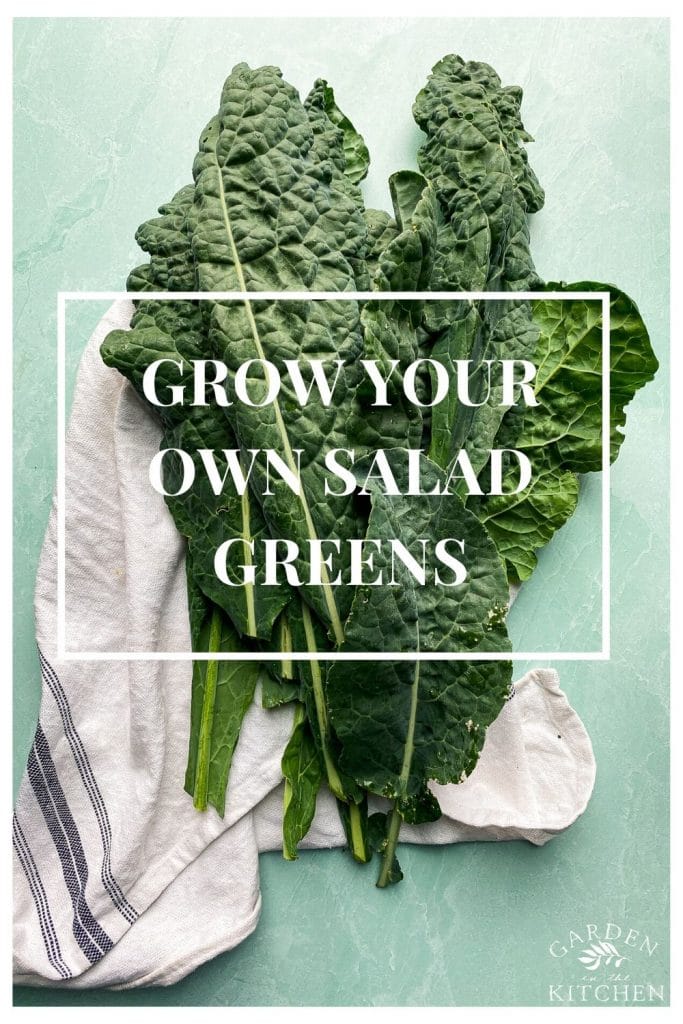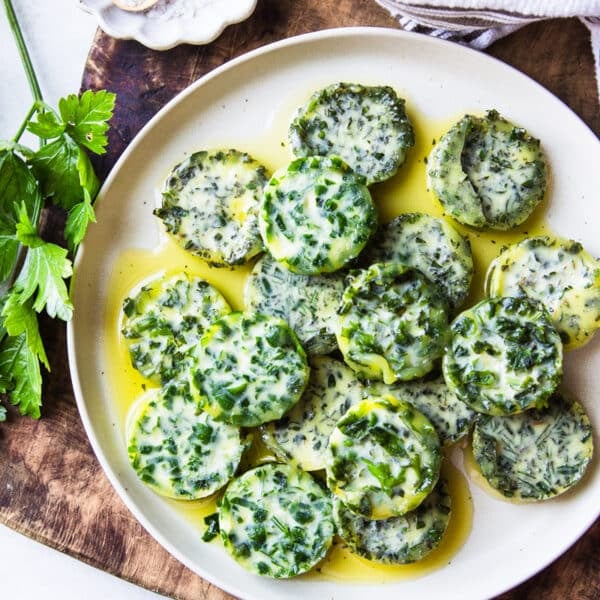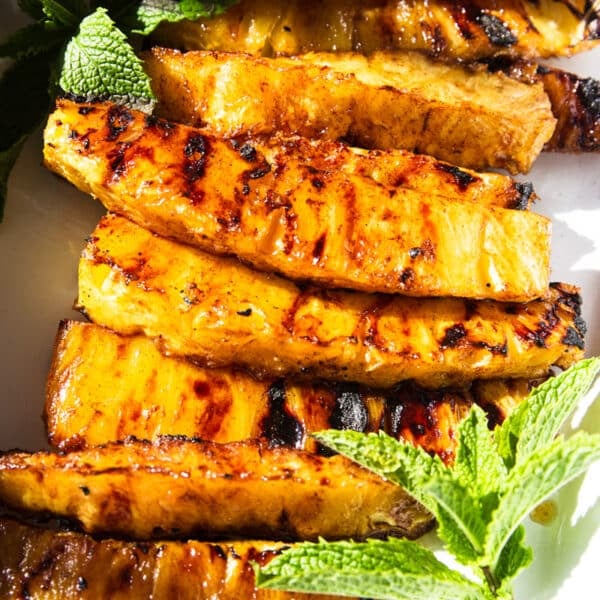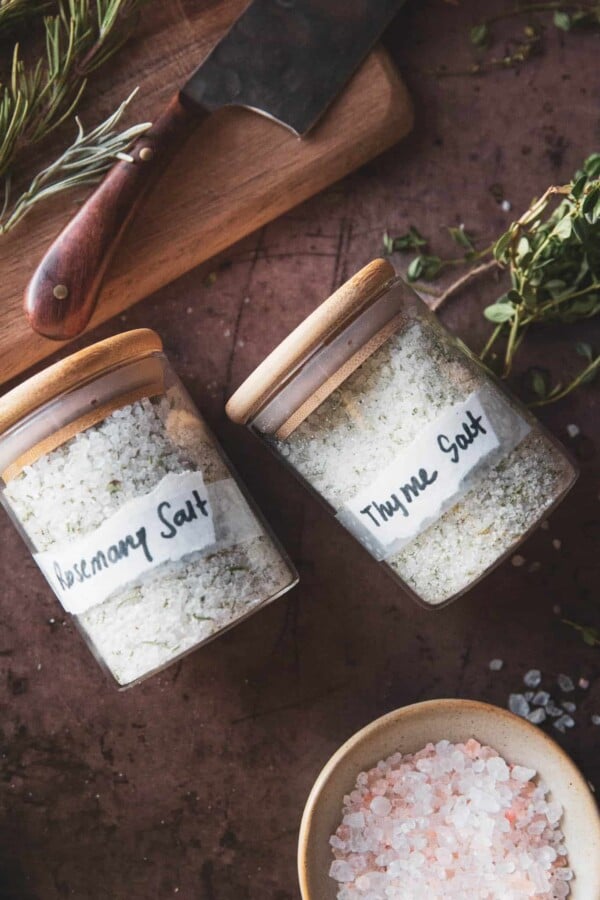Growing your own salad greens is very rewarding. Nothing tastes quite like a salad fresh from your own garden. By growing your own salad greens, you get to choose the varieties you like and your salads will be fresher, maybe less expensive and there’s just something more satisfying about eating something you’ve produced yourself.
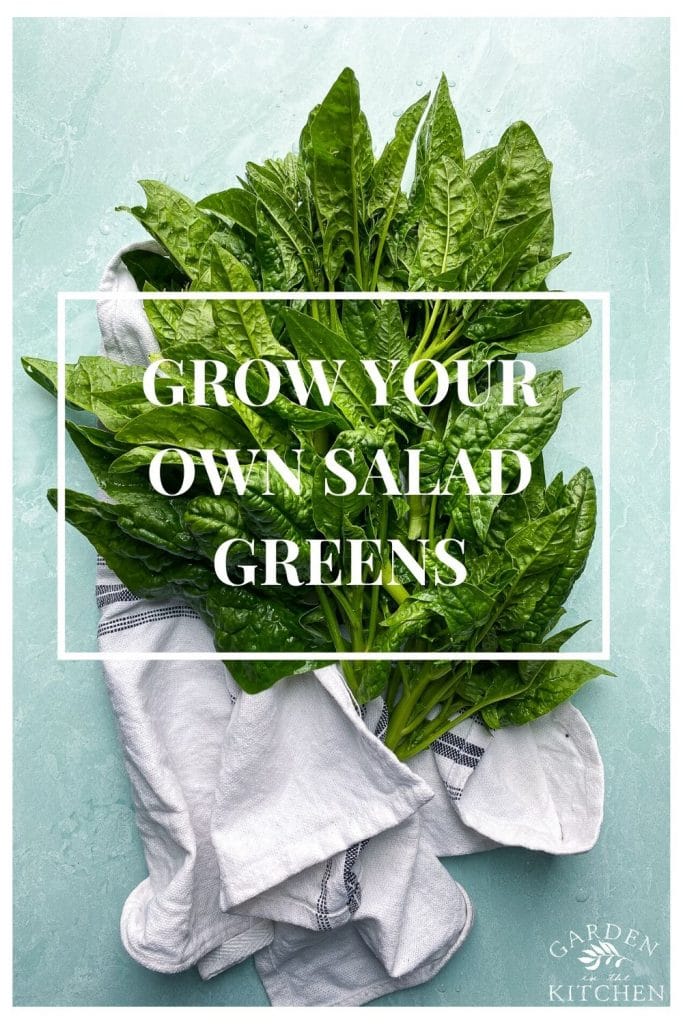
Table of Contents
Looking back only two months ago when my beds were bare and covered in winter debris, it’s hard to believe that in this short frame of time I have already enjoyed many salads.
The varieties I am about to share have been chosen based on how they perform in the early spring weather and my personal taste. Early sprint weather can be very unpredictable, and these varieties will give you a better chance to succeed!
For the record, my ‘salad bed’ varieties (I reserve 1 out 3 raised bed for my salad greens) tolerated very cold spring days, extreme winds and fast rising temperature, all while performing extremely well. I did not cover them.
Below is the workflow outlined for the months of April and May. Of course this could look different depending on your garden. Additionally, you can plant these varieties in boxes and containers. To learn more, read this post on Container Garden.
April and May Garden Workflow
- Start preparing beds by cleaning out any debris from last season.
- Consider adding organic soil if it looks like the beds are running low. I do this every 2-3 years.
- Prepare the beds by working compost into the soil as soon as the ground has thawed.
- Plant spring vegetables. See this guide for what to plant in early spring, in addition to what’s listed in this post.
- It’s a good idea to consider mulching your beds for weed control. Alternatively you can have the beds covered with tarp.
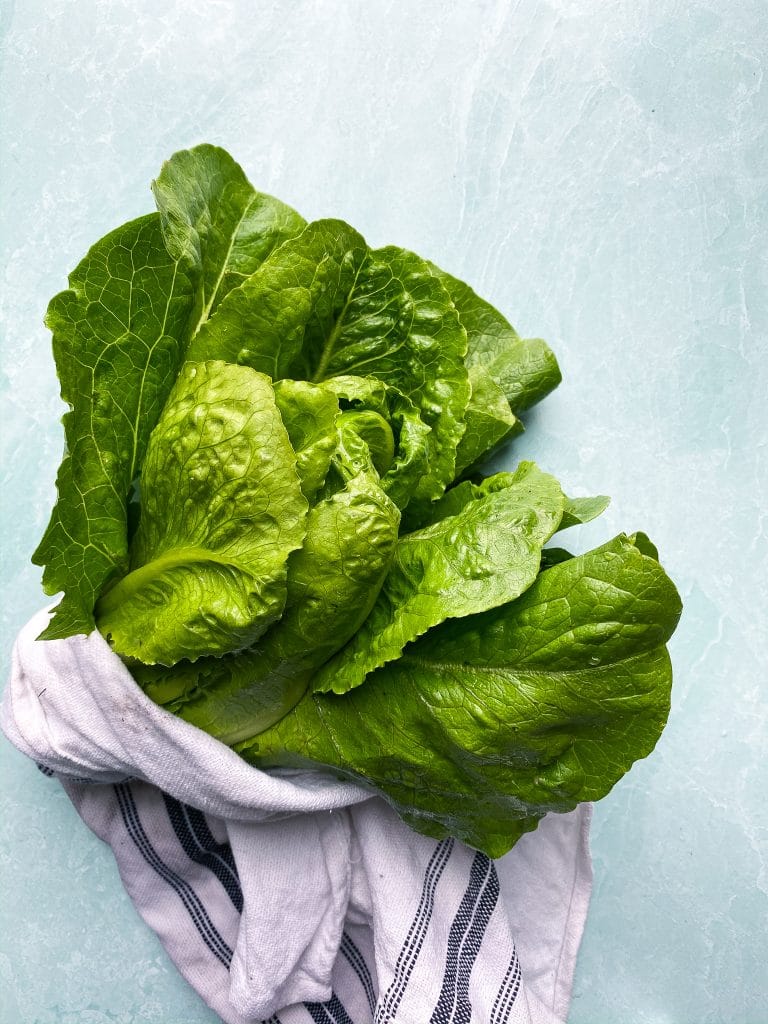
Romaine Lettuce
Romaine lettuce has long, upright leaves that hold themselves bunched together as they mature. While most types of lettuce thrive in cool moist conditions, romaine lettuce is tolerant of heat.
Lettuce thrive in well drained soil that can also retain enough moisture for plant roots. Sow seeds directly into the soil and rake lightly to cover them. Thin them out when the plant has about four leaves, plant 12 inches apart.
To harvest your lettuce, cut outer leaves when they mature or if you prefer cut the entire plant with a sharp knife at the base just above the ground.
The leaves are crisp, juicy and be used in salads, as a tortilla substitute or grilled.
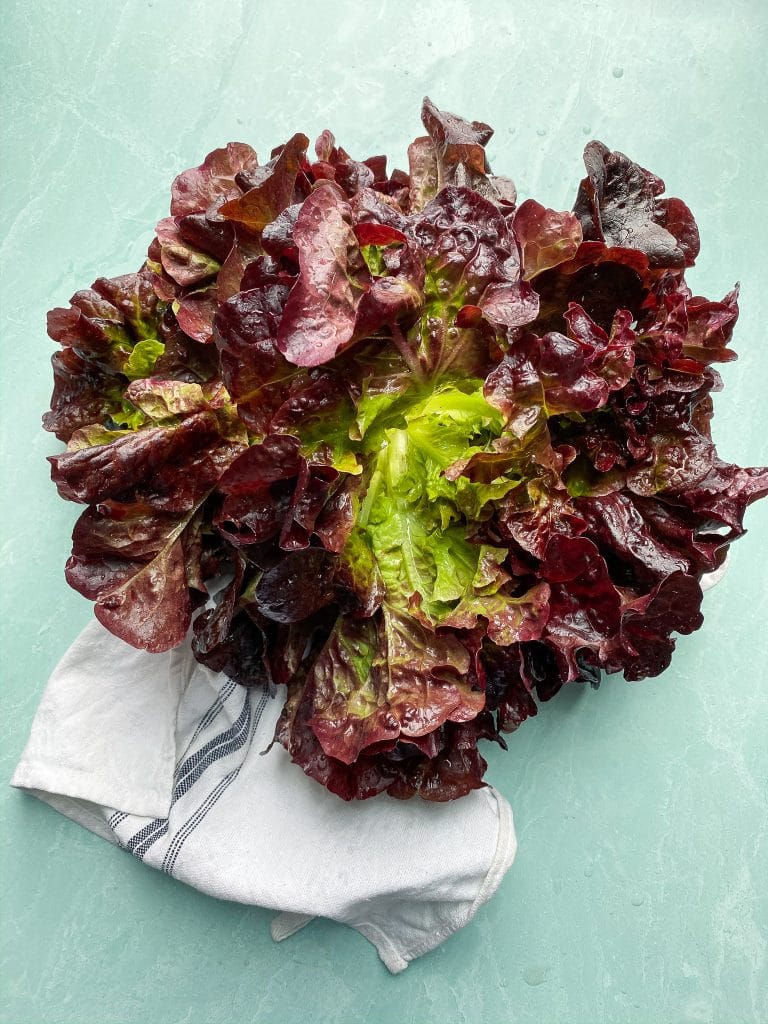
Red Salad Bowl Lettuce
There are a few varieties that are included in the Red leaf lettuce family or cultivars.
This variety of lettuce has loose, open heads of deep-red, crinkled leaves that can be harvested as needed. Alternatively whole heads can also be cut.
Proceed with the same instructions as for all lettuce types. Good for early spring sowing, frost tolerance.
To make sure you have a visually appealing salad, it’s always a good idea to mix green and red leaf lettuce.
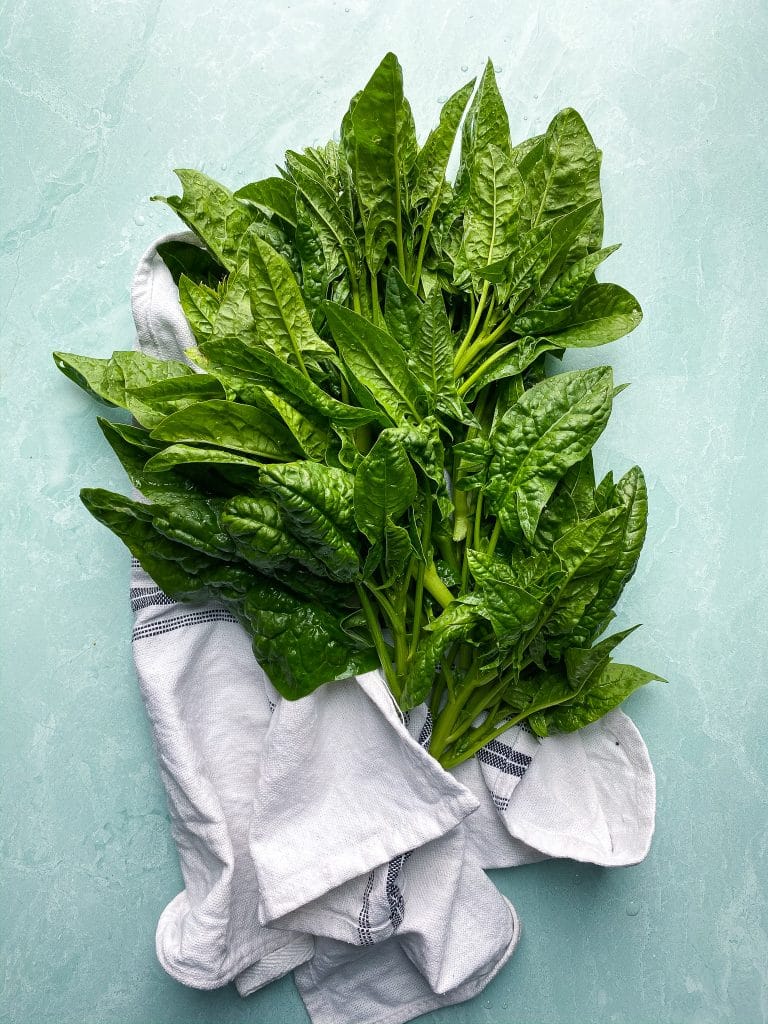
Spinach
Spinach is an easy-to-grow crop that can be harvested in as little as 40-45 days (about 6 weeks). This leafy green can tolerate frost without damage and grow very well in containers as well as in the garden.
Sow or plant seedlings directly outside, in containers or window boxes about 6in apart. When selecting the container keep in mind that spinach roots are shallow, therefore you won’t need a very deep container. Keep the area well moist and weeded so the spinach doesn’t need to fight for water and nutrients.
Spinach can be harvested when the leaves are still small, for a milder taste perfect for salads, by cutting the outer leaves leaving the smaller ones in the middle to continue growing. A second option is to allow the leaves to grow larger (about 10 weeks) and harvest at that time.
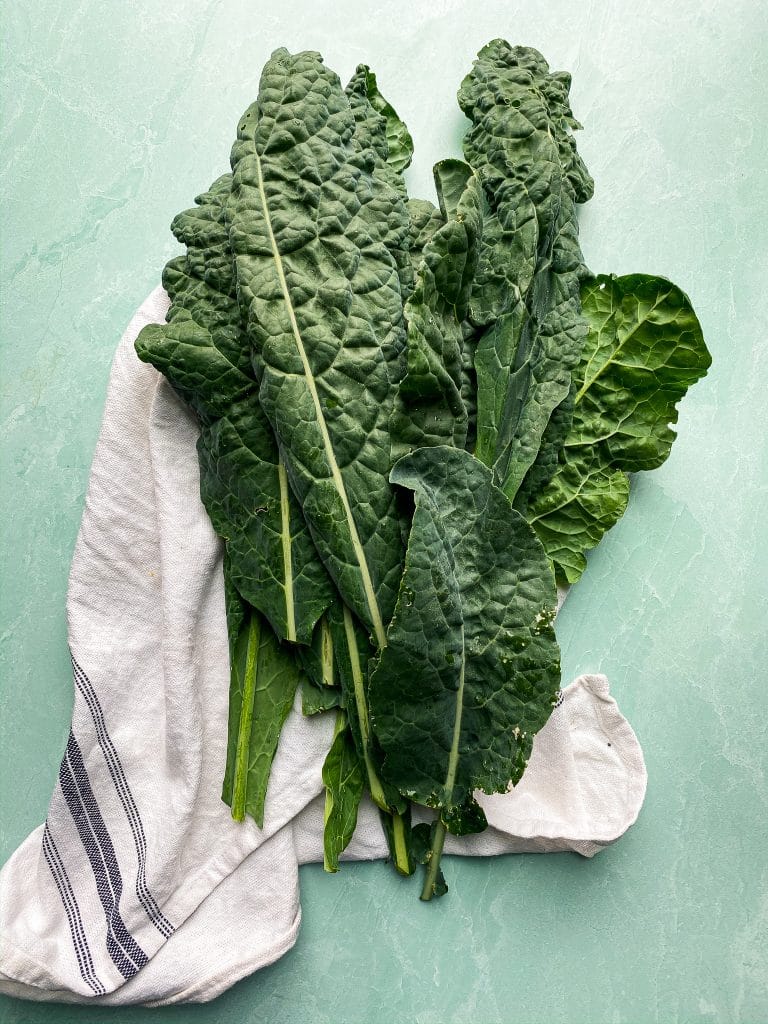
Kale
Kale is a member of the cabbage family and is easy to grow. It’s leaves are rick in vitamin A, C and calcium.
Kale grows best in cool weather which is the perfect candidate for early an April crop. Kale thrives in moist soil, but do not allow the soil to become soggy. Harvest outer leaves as needed and new leaves will keep growing.
This particular variety is called ‘Black Magic’ with long and narrow, crinkled leaves. Kale leaves mingle nicely in salads, stir-fries, and soups. This particular variety of kale makes excellent kale chips!
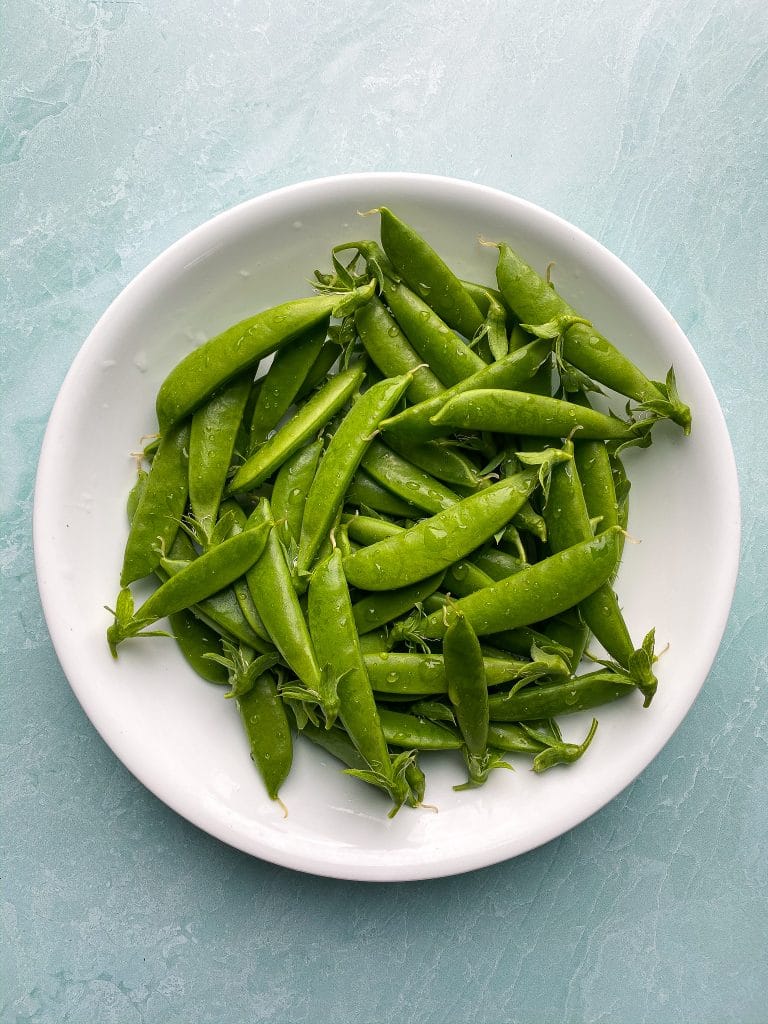
Snap Peas
Peas are one of the greatest treats of spring garden. While all vegetables taste better when picked fresh, this is specially true for peas. The taste of a freshly picked pea cannot be compared to anything you might get at the store.
Peas are very easy to grow and are ideal for smaller plots because they grow upwards (climb), taking very little space on the bed.
Peas thrive in cool temperatures. The plant can survive frost but grow poorly in high temperatures. Plant peas in early spring when soil is around 40F degrees.
Harvest peas while fresh and green, before they start to turn yellow. Pick the pods that are full size. Cut the pods from the plant instead of pulling off to avoid damaging the plant.


Tips for a successful pea crop
Peas are climbing plants, so it’s important to provide the plant with a support system early on. As you can see in these pictures I used both a wire trellis and tomato cages, and they worked really well in providing with enough support for the plant to climb.
Trellis can be purchased at a garden center or you can use garden scraps like wood sticks, chicken wire and other material to crate your own.
When the plant is still very young, you can train them to climb by loosely tie the plant to the trellis using a piece of string or garden twist ties.

Green Onions
This particular variety is called Welsh onion. Also called bunching onion and spring onion, is a perennial plant often considered to be a scallion.
The species is very similar in taste and smell as the common onion, however the welsh onion does not develop bulbs and are hollow on the inside.
Green onion is a variety between leek and its smaller cousin chives and they can multiply by forming perennial evergreen clumps. The flower will provide with seeds which then can be collected for later planting or your can allow the flowers to naturally disperse into the soil and flourish in the next season.
A Personal Note on Green Onions (Welsh)
Most of the leaves get fairly thick and those will evenly hold the flower, which will then provide the seeds. When harvesting, choose the smaller narrower leaves.
I find myself having little culinary use for this variety, however they are simply gorgeous in the garden and self sufficient for the most part.
There is the added benefit of having these beautiful blooming flowers in my garden because they will attract bees, butterflies and pollinators, as all Allium flowers will. And at the same time the scent will repel deer, rodents and other garden pests.
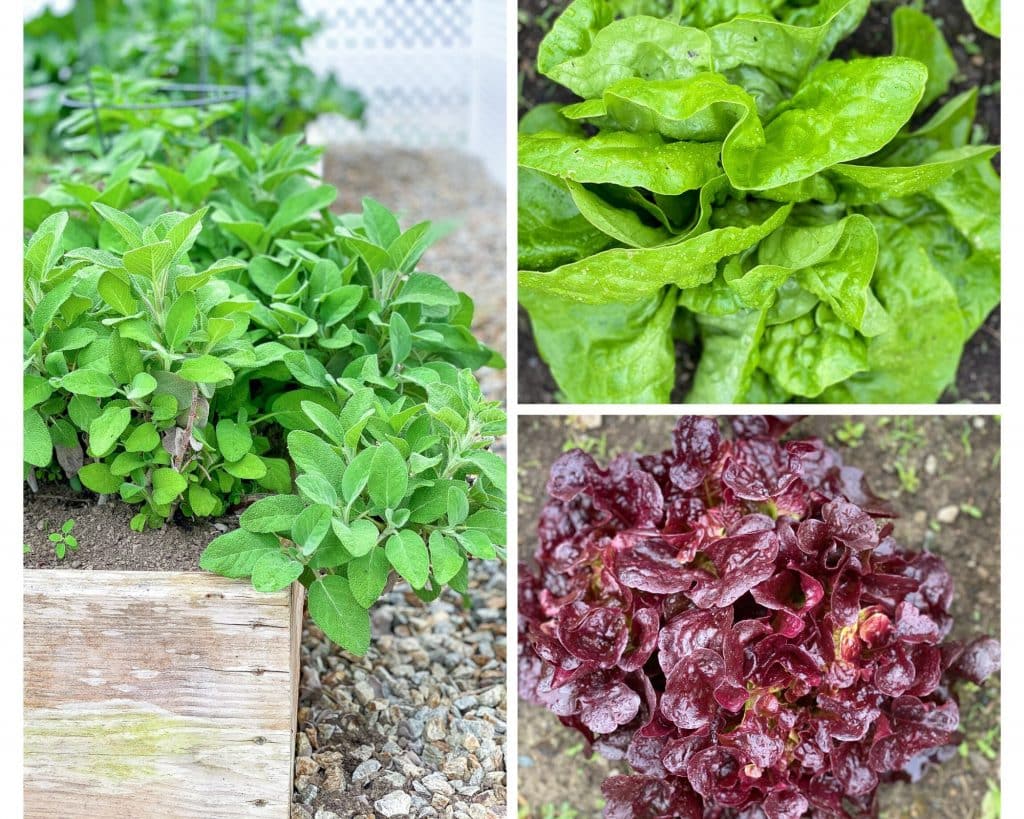
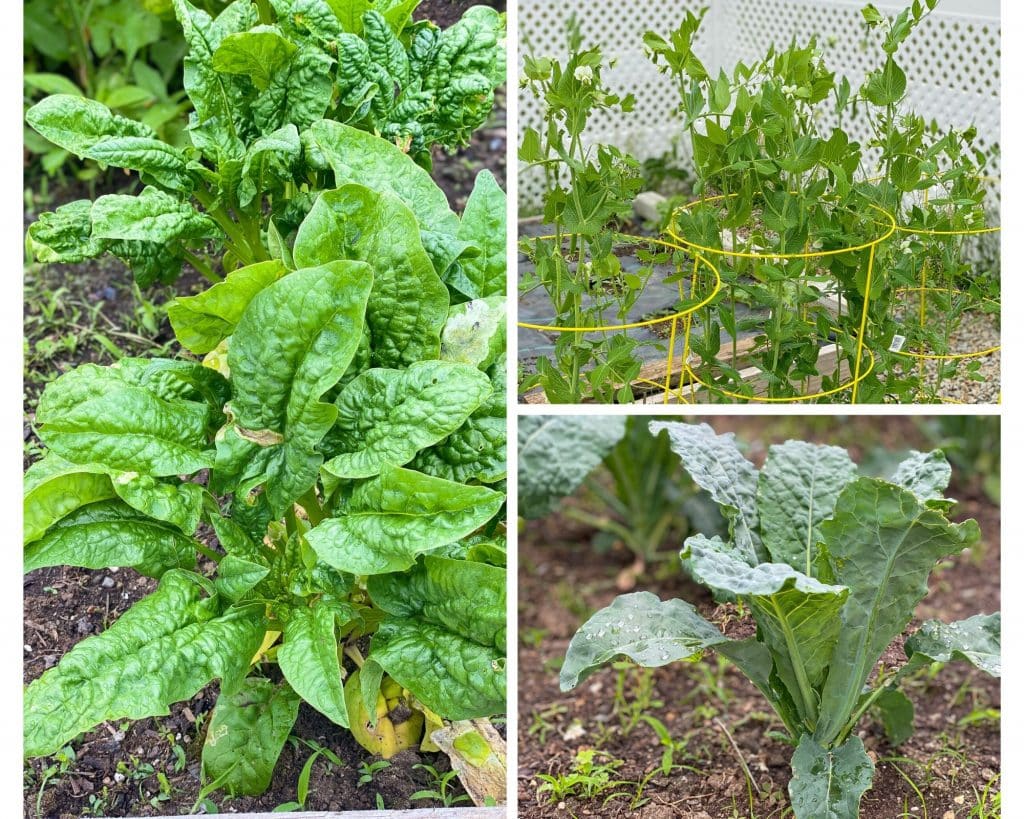
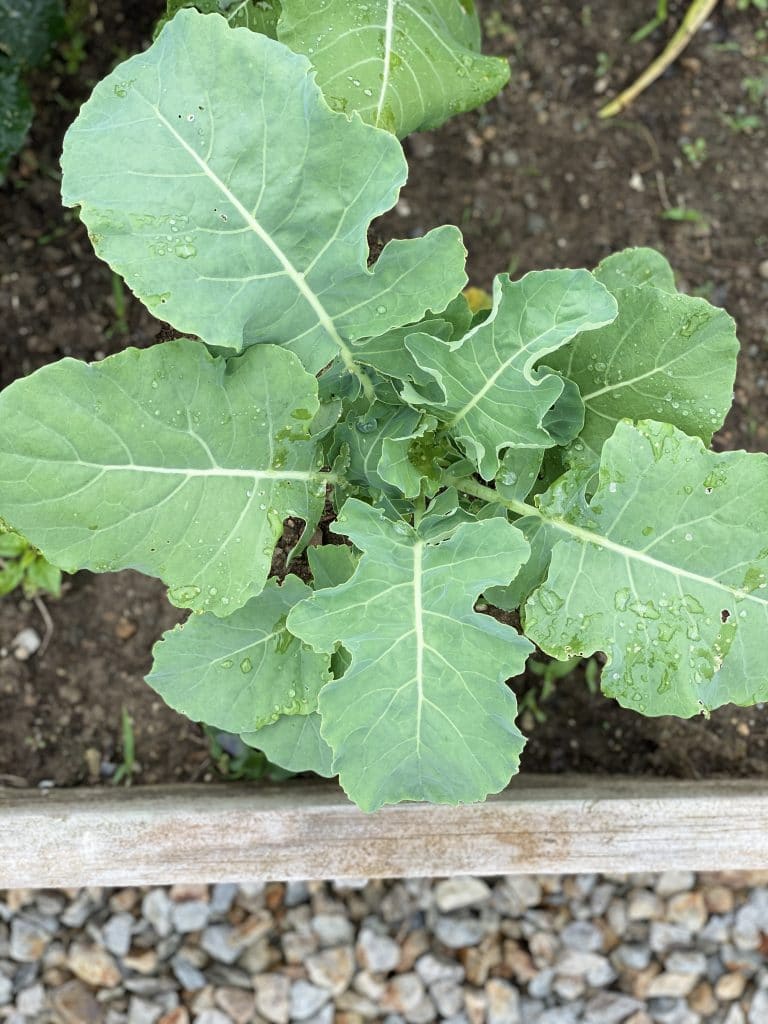
Broccoli
Broccoli is a cruciferous vegetable related to cabbage, kale, cauliflower, and Brussels sprouts. Broccoli is high in many nutrients, including fiber, vitamin C, vitamin K, iron, and potassium.
Broccoli also thrives in cool moist conditions. Mature plants can tolerate light frost.
When planting seedlings in the garden, set them an inch or two deeper than they were growing in their cell packs. Plant them about 2-3 feet apart as the leaves will grow wide. Firm the soil around the plan for support and water well.
Harvest the sprouts by cutting close to the base of the head to stimulate growth of side shoots. (See pictures below)
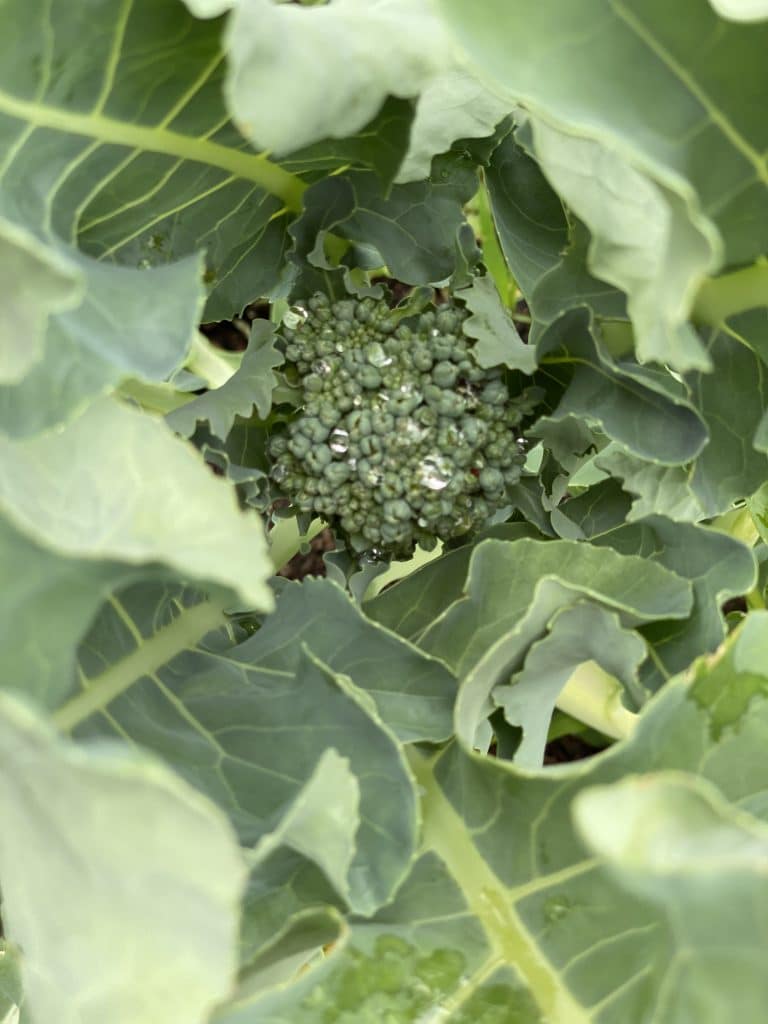
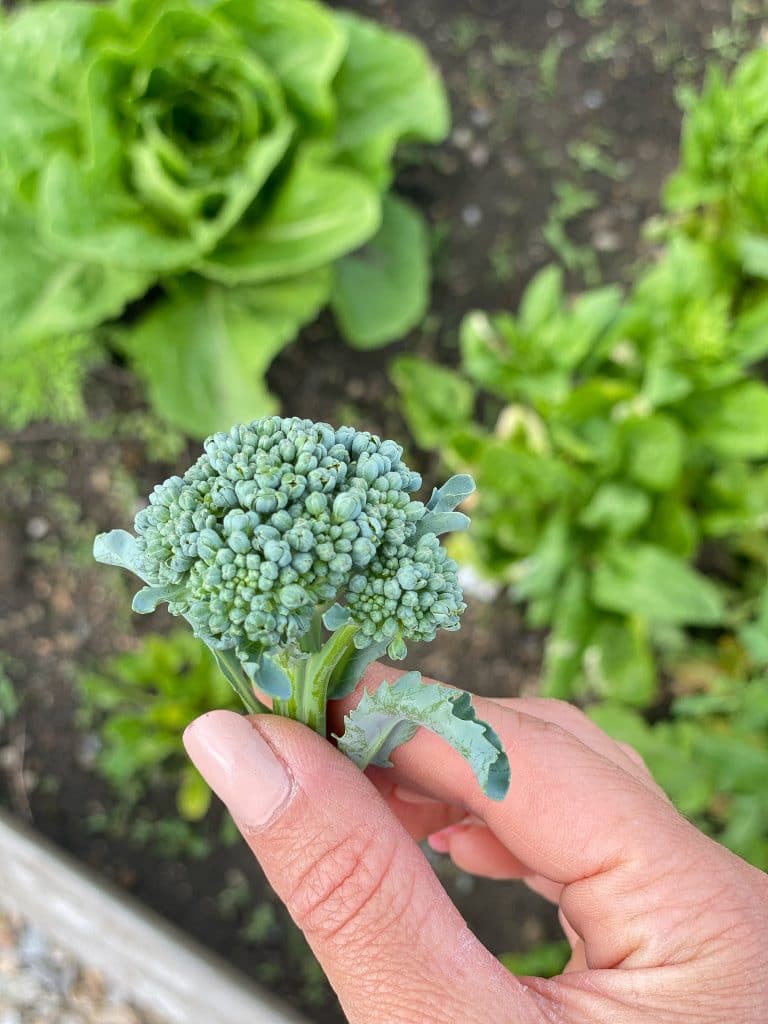
Other Helpful Garden Posts:
Container Garden Guide For Beginners
5 Easy-to-Grow Cool Weather Crops
Vegetable Garden Guide For Beginners
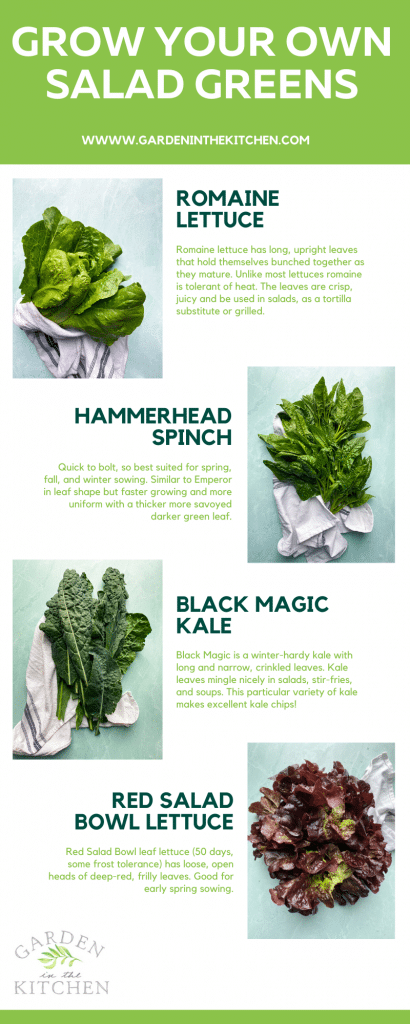
Save this recipe to Pinterest for later!
Just hover over the image and click the “Save” button.
